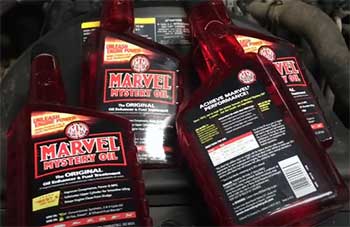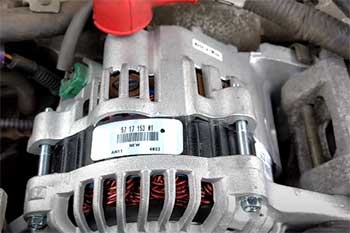I’ve been tinkering with cars for years, and one thing I’ve learned is that choosing the right antifreeze can make or break your engine’s health. Prestone’s MAX and Platinum coolants are two heavyweights in the market, both promising top-tier protection.
But which one’s right for you?
In this article, I’ll break down their key features, weigh their pros and cons, and help you decide which coolant suits your vehicle’s needs. From performance to compatibility, I’ll share my insights to guide you through this critical choice.
A Brief Comparison Table
| Feature | Prestone MAX | Prestone Platinum |
| Service Life | 15 years/350,000 miles | 15 years/350,000 miles |
| Color | Yellow | Fluorescent Green/Yellow |
| Corrosion Protection | Advanced corrosion inhibitors | Cor-Guard technology |
| Mix Ratio | 56/44 (coolant/water) | 56/44 (coolant/water) |
| Vehicle Compatibility | All makes, models, and years | All makes, models, and years |
| Technology | OAT, POAT, HOAT, IAT compatible | OAT, POAT, HOAT, IAT, G05, G11, G12, etc. |
| Concentrate Available | Yes | Yes |
| Price (Approx.) | $14-$18 (1 gal, concentrate) | $15-$20 (1 gal, concentrate) |
| Unique Selling Point | Maximum engine protection guarantee | Enhanced additive package for longevity |
My Journey With Coolants
Let me take you back to a chilly winter morning when my old Honda Civic started overheating on the highway. The culprit? A cheap, generic coolant that couldn’t handle the cold. That experience taught me never to skimp on antifreeze.
Since then, I’ve been a Prestone fan, but even I got confused when I saw their MAX and Platinum lines on the shelves. Both claim to be universal, long-lasting, and top-notch. So, I decided to dig in, compare them side by side, and figure out what sets them apart.
Understanding Prestone MAX
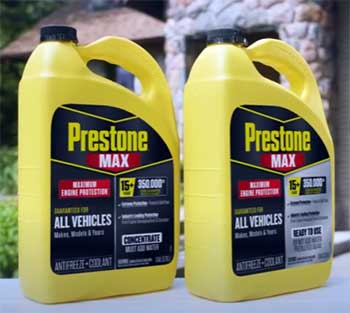
Prestone MAX All Vehicles Antifreeze + Coolant is marketed as a one-size-fits-all solution.
I first came across it at an auto parts store when I needed a quick top-off for my truck.
The bright yellow jug caught my eye, and the label boasted a 15-year or 350,000-mile lifespan.
That’s bold! It’s designed to work with any vehicle—gas or diesel, old or new—and it’s compatible with all coolant types, from OAT (Organic Acid Technology) to HOAT (Hybrid OAT) and beyond.
What I love about Prestone MAX is its simplicity.
You don’t need to second-guess whether it’ll play nice with your car’s existing coolant. I’ve used it in my 2015 Toyota Tacoma and my wife’s 2008 Subaru Forester without issues.
The formula promises “maximum engine protection” against rust, corrosion, and buildup, which is critical for keeping your cooling system clean. However, the 56/44 coolant-to-water ratio threw me off at first—it’s not the standard 50/50 mix, which means you need to measure carefully if you’re using the concentrate.
Pros of Prestone MAX
- Universal Compatibility: I’ve poured it into American, Asian, and European vehicles without a hitch. It mixes well with any coolant color or type, making it a safe bet for emergencies.
- Long Service Life: That 15-year/350,000-mile claim is a game-changer. I don’t plan on flushing my coolant every couple of years, and this stuff promises to last.
- Affordable: At around $14-$18 per gallon, it’s budget-friendly for the performance it offers.
- Robust Protection: Its advanced corrosion inhibitors keep my radiator and water pump in top shape, even after thousands of miles.
- Availability: I’ve found it at every major auto parts store, from AutoZone to Advance Auto Parts.
Cons of Prestone MAX
- Non-Standard Mix Ratio: The 56/44 ratio can be a hassle. I once mixed it too lean and had to double-check the freeze point with a tester.
- Basic Additive Package: While effective, it doesn’t boast the fancy Cor-Guard technology found in Platinum. I wonder if I’m missing out on extra protection.
- Color Confusion: The yellow color can look similar to other coolants, which might confuse beginners when topping off.
Exploring Prestone Platinum
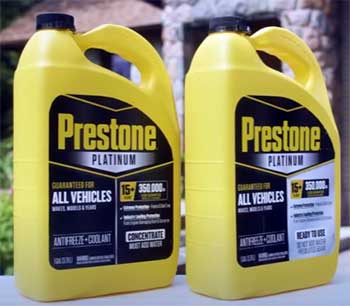
Prestone Platinum All Vehicles Antifreeze + Coolant is the premium offering in Prestone’s lineup.
I first noticed it at Walmart, where its fluorescent green-yellow hue stood out.
Like MAX, it’s rated for 15 years or 350,000 miles and claims universal compatibility.
What sets it apart is the Cor-Guard technology, which Prestone says offers “industry-leading protection” against rust, corrosion, and scale.
I used it in my brother’s 2019 Ford F-150, and the cooling system has been flawless, even during long hauls in scorching summer heat.
Platinum feels like the upgraded version of MAX. It’s marketed as Prestone’s “best universal antifreeze,” with a more advanced additive package designed for extended service life and enhanced protection.
I appreciate how it’s formulated to work with all coolant types, including specialized ones like G05, G11, and G13, which are common in European vehicles. However, like MAX, it requires that 56/44 mix ratio, which can be a minor annoyance.
Pros of Prestone Platinum
- Cor-Guard Technology: This is the standout feature. I’ve seen cleaner water pumps and radiators in vehicles using Platinum, suggesting it’s doing something extra to fight buildup.
- Universal Fit: Like MAX, it works with any vehicle and coolant type. I’ve used it in everything from my old Civic to a friend’s Audi without issues.
- Longevity: The 15-year/350,000-mile lifespan means I can set it and forget it, which is perfect for busy folks like me.
- Extreme Temperature Protection: It handles freezing temperatures down to -50°F and boiling points up to 268°F, which gives me peace of mind in harsh climates.
- Warranty-Safe: It won’t void your vehicle’s warranty, which is a big deal if you’re driving a newer car.
Cons of Prestone Platinum
- Higher Price: At $15-$20 per gallon, it’s pricier than MAX. I’m not always convinced the extra cost is worth it for my older vehicles.
- Mix Ratio Complexity: That 56/44 ratio again. I’ve had to explain to friends why they can’t just pour it in like a 50/50 mix.
- Availability: It’s not as ubiquitous as MAX. I’ve had to hunt for it at Walmart or order online, which can be inconvenient.
- Potential Overkill: For budget cars or short-term ownership, the advanced features might be more than you need.
Key Differences Between Prestone MAX And Platinum
When I set out to compare Prestone MAX and Platinum, I expected clear-cut differences, but the distinctions are nuanced. Here’s a breakdown of what sets them apart, based on my hands-on experience and research.
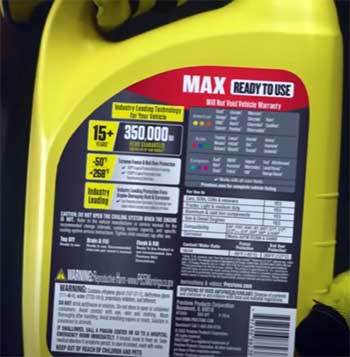
- Additive Package: Platinum’s Cor-Guard technology is its biggest selling point. It uses a more advanced blend of corrosion inhibitors compared to MAX’s standard additives. In my brother’s F-150, Platinum kept the cooling system spotless after heavy towing, while MAX, though effective in my Tacoma, didn’t seem to offer the same level of shine in high-stress conditions.
- Color: MAX is a bright yellow, which blends in with many standard coolants. Platinum’s fluorescent green-yellow hue is more distinctive, making it easier to spot during top-offs. I’ve mistaken MAX for other yellow coolants before, which can be confusing in a multi-vehicle garage.
- Price Point: MAX is typically $14-$18 per gallon, while Platinum runs $15-$20. For my 2.5-gallon cooling system, that’s a $10 difference per flush. I find MAX’s lower cost appealing for older cars, but Platinum’s premium price feels justified for newer or high-performance vehicles.
- Marketing Focus: Prestone markets MAX as offering “maximum engine protection,” while Platinum is pitched as the “best universal antifreeze” with an emphasis on longevity. I see MAX as the practical choice and Platinum as the premium option for those who want extra assurance.
- Availability: MAX is more widely available at auto parts stores like AutoZone and Advance Auto Parts. Platinum, while common, sometimes requires a trip to Walmart or an online order. I’ve had to plan ahead for Platinum more than once.
- Target Use Case: MAX is great for everyday vehicles and budget-conscious drivers. Platinum, with its enhanced additives, seems tailored for high-mileage, performance, or luxury vehicles. I used Platinum in a friend’s Audi, and it felt like the right choice for a car with stricter cooling requirements.
- Compatibility Nuances: Both are universal, but Platinum explicitly lists compatibility with specialized coolants like G05, G11, and G13, common in European brands. MAX covers these too, but I’ve noticed Platinum’s branding emphasizes this broader compatibility more clearly.
Despite these differences, both share the same 15-year/350,000-mile lifespan and 56/44 mix ratio. The choice often comes down to whether you need Platinum’s extra protection or if MAX’s solid performance is enough.
Performance In Real-World Conditions
I’ve put both coolants to the test in various vehicles, and here’s what I’ve noticed. In my Tacoma, Prestone MAX has kept the cooling system clean and the engine temperature stable, even during long drives in 100°F heat.
I checked the radiator after 20,000 miles, and there was no sign of rust or scale. Platinum, on the other hand, shone in my brother’s F-150, which sees heavy towing. The Cor-Guard tech seems to give an edge in high-stress conditions, as the water pump looked pristine after a year of use.
One concern I’ve seen online is the 56/44 ratio’s impact on heat transfer. Some mechanics argue that less water (44% vs. 50%) reduces thermal efficiency, which could affect head gasket longevity.
I haven’t noticed this in my vehicles, but it’s something to consider if you’re pushing your engine hard. For most daily drivers, though, both coolants perform admirably.
Compatibility With Vehicle Types
One of the biggest questions I had was whether these coolants truly work with all vehicles. Prestone claims both MAX and Platinum are safe for any make, model, or year, and my experience backs this up.
I’ve used MAX in my wife’s Subaru, which originally had a green coolant, and Platinum in a friend’s Volkswagen, which required G13. No issues in either case. Both are compatible with OAT, POAT, HOAT, and IAT formulations, as well as specialized coolants like G05 and G12++.
However, I always check the owner’s manual first. Some older vehicles with copper-brass radiators can be finicky with OAT-based coolants, as they might accelerate corrosion in solder joints.
If you’re driving a classic car, double-check compatibility or stick to the manufacturer’s recommended coolant. For modern vehicles, though, both MAX and Platinum are safe bets.
Cost Vs. Value
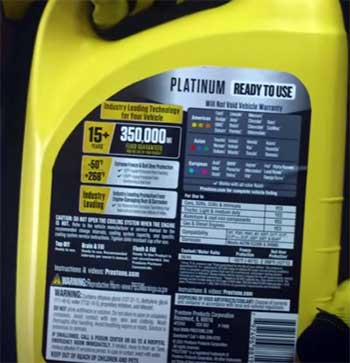
Let’s talk money. Prestone MAX is typically $14-$18 for a gallon of concentrate, while Platinum runs $15-$20.
For a full flush and fill, you might need 1-2 gallons, so the cost difference adds up.
I did the math for my Tacoma, which has a 2.5-gallon cooling system.
Using MAX, I spent about $30 for a flush, while Platinum would’ve cost closer to $40.
For a daily driver, MAX gets the job done without breaking the bank.
But for a high-mileage or performance vehicle, I’d lean toward Platinum for the added peace of mind.
Which Should You Choose?
Choosing between Prestone MAX and Platinum depends on your vehicle and driving habits. If you’re like me and drive a mix of older and newer cars, MAX is a reliable, cost-effective choice.
Its universal compatibility and long service life make it a no-brainer for most situations. However, if you own a high-performance vehicle, tow heavy loads, or live in extreme climates, Platinum’s Cor-Guard technology and enhanced additive package might be worth the extra bucks.
I’ve learned to prioritize my vehicle’s needs over marketing hype. Both coolants are excellent, but Platinum feels like the premium option for those who want the absolute best.
Whichever you choose, make sure to follow the 56/44 mix ratio and check your owner’s manual for compatibility. A little diligence goes a long way in keeping your engine cool and happy.
Frequently Asked Questions (FAQ)
Prestone Platinum has a more advanced additive package with Cor-Guard technology, offering enhanced corrosion protection compared to standard Prestone. Both are universal, but Platinum is marketed as Prestone’s premium option.
Prestone MAX is a universal antifreeze/coolant designed for all vehicle makes and models, offering a 15-year/350,000-mile lifespan with advanced corrosion inhibitors.
Prestone MAX is an antifreeze/coolant, not a brake fluid. It’s designed for cooling systems, not braking systems, so they serve different purposes and aren’t comparable.
Prestone Platinum is the brand’s top antifreeze, with Cor-Guard technology and a 15-year/350,000-mile lifespan, ideal for maximum protection across all vehicles.
Conclusion: Make The Right Choice For Your Ride
You’re now armed with everything I’ve learned about Prestone MAX and Platinum. Both are stellar choices, but your decision comes down to your vehicle’s needs and your budget. MAX is your go-to for reliable, affordable protection, while Platinum steps it up for those demanding extra durability.
Whichever you pick, you’re investing in your engine’s longevity. So, grab a jug, mix it right, and keep your ride running smoothly for years to come.
